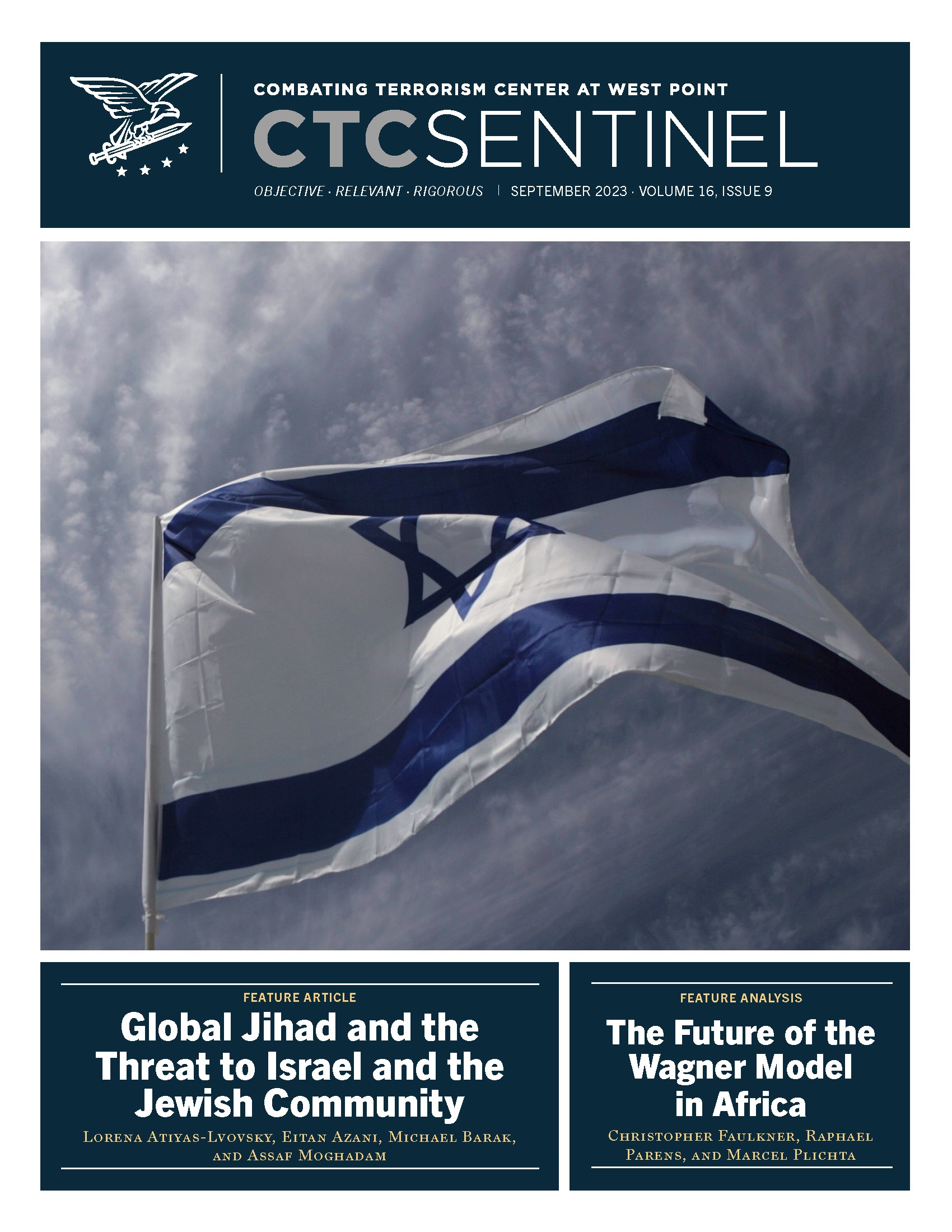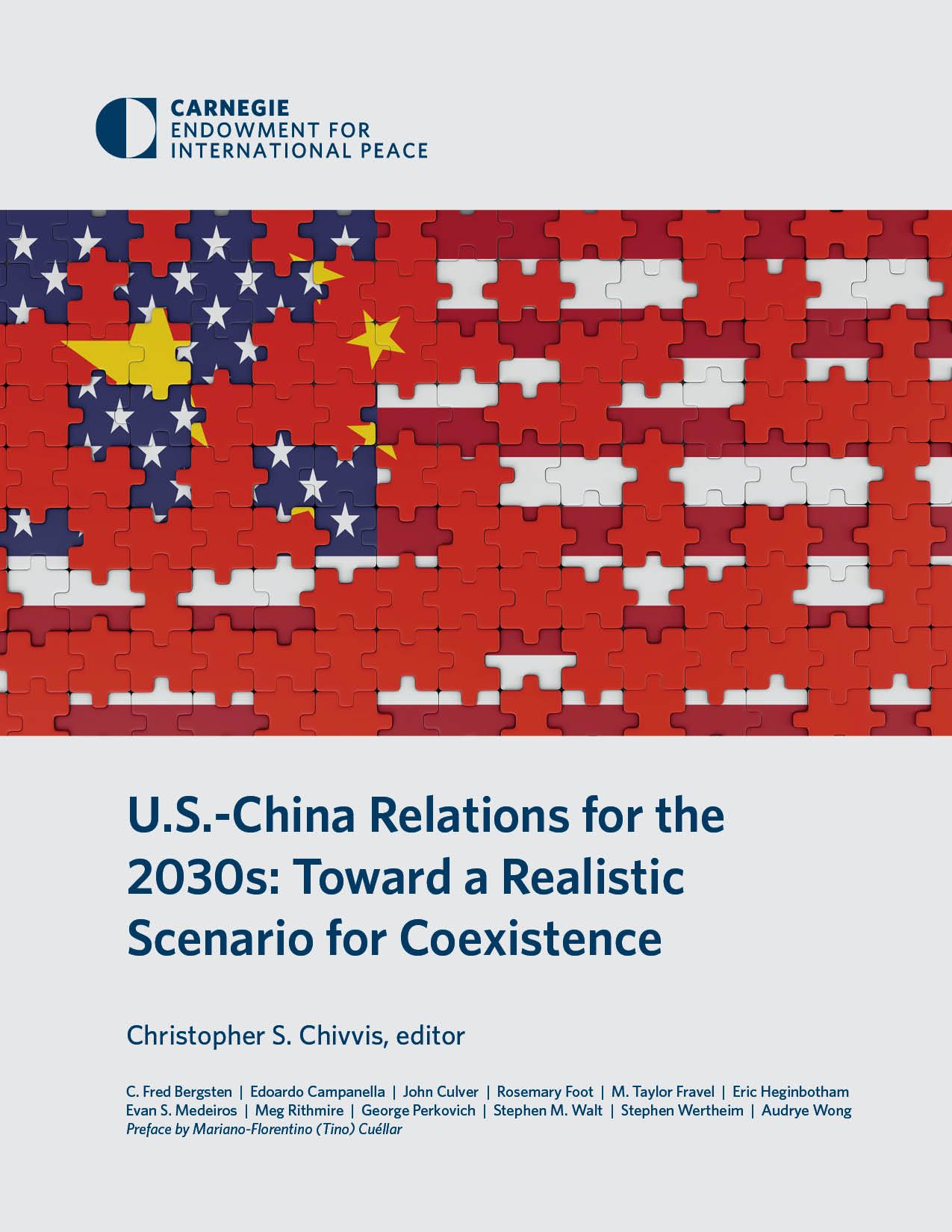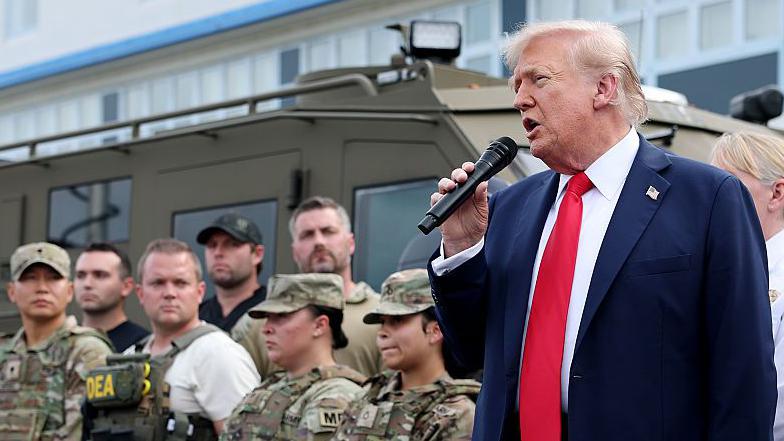Illicit Economies and Violent Extremism in the Sahel: A Threat to Sustainable Development
The Sahel region is experiencing a severe security crisis, fundamentally driven by violent extremism, which obstructs progress towards the Sustainable Development Goals (SDGs). The 2025 Global Terrorism Index indicates the region accounts for 51% of global terrorism-related fatalities, a direct assault on SDG 16 (Peace, Justice and Strong Institutions). The illicit economies that finance and sustain this violence represent a critical challenge to regional stability and sustainable development, undermining efforts to achieve SDG 8 (Decent Work and Economic Growth) and SDG 1 (No Poverty).
The Nexus of Conflict and Illicit Trade: Undermining Key SDGs
Illicit Gold Mining and its Socio-Economic Impact
The region’s vast gold deposits are central to an illicit economy that thrives on instability. This directly contravenes several SDG targets.
- Violation of SDG 16.4: Artisanal and small-scale mining, much of it illegal, accounts for approximately 50% of the region’s gold production. This constitutes a massive illicit financial flow, depriving states of revenue needed for public services and development.
- Undermining SDG 8: While over 1.8 million people depend on mining for their livelihoods, the lack of regulation and control by extremist groups prevents the establishment of decent work. Miners often operate in hazardous conditions, and profits are diverted to fuel conflict rather than foster sustainable economic growth.
- Weakening SDG 16.6: Violent extremist groups like Jama’at Nusrat ul-Islam wa al-Muslimin (JNIM) exploit governance vacuums to control mining territories. They impose taxes and offer “protection,” supplanting state authority and creating parallel governance structures that erode effective and accountable institutions.
- Threatening SDG 15: To gain local support, extremist groups often permit illegal mining and logging in protected natural reserves, causing significant environmental degradation and undermining efforts to protect life on land.
Proliferation of Illicit Arms
The widespread availability of illegal weapons exacerbates violence and insecurity, posing a direct threat to peace and development initiatives.
- Failure to meet SDG 16.4: An estimated 12 million illegal weapons are circulating in West Africa. The failure to significantly reduce illicit arms flows fuels conflict, empowers criminal networks, and makes communities less safe.
- Erosion of SDG 16.1: The arms trade fuels inter-communal violence, farmer-herder conflicts, and the rise of armed vigilante groups. This creates cycles of reprisal attacks, destroying social cohesion and fundamentally undermining efforts to reduce all forms of violence.
Drug Trafficking and Human Exploitation
The convergence of terrorism with drug and human trafficking creates a complex humanitarian crisis and further destabilizes the region.
- Humanitarian Crisis: The violence has led to the forced displacement of approximately five million people, with another 33 million requiring humanitarian assistance. This crisis severely impedes progress on SDG 1 (No Poverty) and SDG 10 (Reduced Inequalities), as displaced populations are vulnerable to exploitation, including forced labour and sex trafficking, which are targeted by SDG 8.7 and SDG 5 (Gender Equality).
- Youth Vulnerability: Disillusioned youth are turning to substance abuse, making them susceptible to recruitment by criminal and extremist networks. Terrorist groups, in turn, tax drug smuggling routes, creating a feedback loop that undermines public health and security, key components of SDG 3 (Good Health and Well-being).
Governance Failures and Regional Fragmentation: Barriers to SDG 17
The crisis is rooted in the limited capacity of governments to implement laws, address corruption, and govern vast territories. This failure of institutions, central to SDG 16, has enabled illicit economies to flourish. Recent political instability and the withdrawal of Mali, Burkina Faso, and Niger from the Economic Community of West African States (ECOWAS) have fragmented regional cooperation. This directly undermines SDG 17 (Partnerships for the Goals), which is essential for mounting a coordinated response to transnational organized crime and terrorism.
A Path Forward: Recommendations for an SDG-Aligned Response
A comprehensive strategy aligned with the SDGs is required to address both the symptoms and root causes of the crisis. The African Union (AU) is positioned to lead this effort.
Strengthening Regional Cooperation and Institutions (SDG 16 & SDG 17)
- The AU must leverage its convening power to foster dialogue and cooperation between the Alliance of Sahel States (AES) and ECOWAS members to tackle transnational organized crime.
- Revive and strengthen regional security mechanisms, such as the Nouakchott Process, focusing on intelligence sharing, joint border patrols, and targeted operations against criminal and extremist networks.
- Urge member states to adopt robust measures to shrink the resource base for extremist groups, including enhanced financial tracking and rigorous arms stockpile management to prevent diversion.
Addressing Root Socio-Economic Drivers (SDG 1, SDG 8, SDG 10)
- Mobilize development funds for youth-centered economic programs, particularly in border communities, to provide viable alternatives to illegal mining, smuggling, and extremism.
- Promote policies that formalize and regulate artisanal mining to ensure it contributes to decent work and sustainable local economies rather than conflict.
- Invest in community-level development to address the grievances and inequalities that make populations susceptible to extremist ideologies.
Analysis of Sustainable Development Goals (SDGs) in the Article
1. Which SDGs are addressed or connected to the issues highlighted in the article?
-
SDG 1: No Poverty
The article connects to SDG 1 through its discussion of the humanitarian crisis, where millions are displaced and in need of support, pushing them into poverty and vulnerability. The reliance on illegal mining for livelihoods also highlights the lack of sustainable economic opportunities, a key driver of poverty.
-
SDG 3: Good Health and Well-being
This goal is relevant due to the mention of substance abuse among disillusioned youth. The article specifically points out the use of “tramadol and other synthetic opioids,” which creates dependency and health crises, directly relating to the target of strengthening the prevention and treatment of substance abuse.
-
SDG 8: Decent Work and Economic Growth
SDG 8 is central to the article’s focus on illicit economies. It discusses how “1.8 million people” rely on often “unlawful” and “hazardous” artisanal mining for their livelihoods, which is the opposite of decent work. The article also touches upon forced labour and the loss of state revenue from illegal gold production, undermining sustainable economic growth.
-
SDG 15: Life on Land
The article links to SDG 15 by mentioning that extremist groups negate state regulations by permitting “logging in restricted natural reserves.” This action directly undermines efforts to protect and restore terrestrial ecosystems and halt deforestation.
-
SDG 16: Peace, Justice and Strong Institutions
This is the most prominent SDG in the article. The text is centered on violence, terrorism, organized crime, illicit arms flows, and corruption. It highlights the failure of governance (“governance vacuums,” “limited capacity of governments”), the proliferation of illegal weapons, and the high number of terrorism-related deaths, all of which are core concerns of SDG 16.
-
SDG 17: Partnerships for the Goals
The article emphasizes the need for regional and international cooperation to address the crisis. It points to the fragmentation of regional efforts with the withdrawal of countries from ECOWAS and calls for the African Union (AU) to lead “coordinated responses” and bring different state actors together, which aligns with the spirit of partnership in SDG 17.
2. What specific targets under those SDGs can be identified based on the article’s content?
-
Target 16.1: Significantly reduce all forms of violence and related death rates everywhere
The article directly addresses this target by stating that “The Sahel accounts for 51% of global terrorism-related deaths” and describes widespread violence from extremism, banditry, and inter-communal conflicts.
-
Target 16.4: Significantly reduce illicit financial and arms flows, strengthen the recovery and return of stolen assets and combat all forms of organized crime
This target is extensively covered. The article details the illicit economies built on illegal gold mining which “robs states of billions in revenue.” It also highlights the “illicit arms trade,” noting that “About 12 million illegal weapons are circulating in West Africa,” and discusses the smuggling of drugs and people as part of organized crime.
-
Target 16.5: Substantially reduce corruption and bribery in all their forms
The article implies this target by mentioning that “corrupt officials are key sources of arms” and that “socioeconomic conditions that breed corruption” allow illicit economies to thrive.
-
Target 16.6: Develop effective, accountable and transparent institutions at all levels
This is addressed through the description of “governance vacuums,” the “limited capacity of governments to implement existing laws,” and how extremist groups “step into governance vacuums, controlling territories and markets,” thereby undermining state authority and institutions.
-
Target 8.7: Take immediate and effective measures to eradicate forced labour, end modern slavery and human trafficking
The article connects to this target by stating that displaced populations are “vulnerable to exploitation through forced labour, sex trafficking and migrant smuggling.”
-
Target 3.5: Strengthen the prevention and treatment of substance abuse, including narcotic drug abuse
This is identified when the article notes that youths have “turned to substance abuse. Low-cost drugs such as tramadol and other synthetic opioids are creating dependency.”
-
Target 15.2: Promote the implementation of sustainable management of all types of forests, halt deforestation…
The article relates to this target by describing how an extremist group, JNIM, “negates state regulations by permitting… logging in restricted natural reserves” to gain local support.
3. Are there any indicators mentioned or implied in the article that can be used to measure progress towards the identified targets?
-
Indicator for Target 16.1 (Reduce violence and death rates)
The article provides a direct indicator: “The Sahel accounts for 51% of global terrorism-related deaths.” This statistic can be used to measure the scale of conflict-related deaths (Official Indicator 16.1.2).
-
Indicators for Target 16.4 (Reduce illicit financial and arms flows)
Several indicators are mentioned:
- The circulation of “About 12 million illegal weapons” in West Africa serves as a measure of illicit arms flows.
- The fact that “60% of firearms seized from civilians in Burkina Faso in 2016 and 2017 [were] locally crafted” provides data on the source of illicit arms (related to Indicator 16.4.2).
- The statement that unlawful gold mining “robs states of billions in revenue” points to the value of illicit financial flows (related to Indicator 16.4.1).
-
Indicators for humanitarian and poverty-related issues (SDG 1)
The article provides clear numbers that serve as indicators of the crisis:
- “about five million people have been forcibly displaced.”
- “another 33 million need humanitarian support.”
-
Indicator for informal/precarious employment (SDG 8)
The figure that “over 1.8 million people in the Sahel relying on mining for their livelihoods” can be used as an indicator for the proportion of the population in precarious or informal employment, especially since the article notes this mining is often unlawful and hazardous.
4. Table of SDGs, Targets, and Indicators
| SDGs | Targets | Indicators Identified in the Article |
|---|---|---|
| SDG 16: Peace, Justice and Strong Institutions | 16.1: Significantly reduce all forms of violence and related death rates everywhere. | The Sahel accounts for 51% of global terrorism-related deaths. |
| SDG 16: Peace, Justice and Strong Institutions | 16.4: Significantly reduce illicit financial and arms flows… and combat all forms of organized crime. | – About 12 million illegal weapons are circulating in West Africa. – Illicit gold mining robs states of billions in revenue. – 60% of firearms seized in Burkina Faso (2016-17) were locally crafted. |
| SDG 16: Peace, Justice and Strong Institutions | 16.5: Substantially reduce corruption and bribery in all their forms. | Corrupt officials are a key source of arms for criminal groups. |
| SDG 16: Peace, Justice and Strong Institutions | 16.6: Develop effective, accountable and transparent institutions at all levels. | Existence of “governance vacuums” and “limited capacity of governments to implement existing laws.” |
| SDG 1: No Poverty | 1.5: Build the resilience of the poor and those in vulnerable situations and reduce their exposure and vulnerability to… shocks and disasters. | – About 5 million people have been forcibly displaced. – 33 million people need humanitarian support. |
| SDG 8: Decent Work and Economic Growth | 8.7: Take immediate and effective measures to eradicate forced labour, end modern slavery and human trafficking. | Displaced populations are vulnerable to forced labour and sex trafficking. |
| SDG 8: Decent Work and Economic Growth | 8.8: Protect labour rights and promote safe and secure working environments for all workers. | Over 1.8 million people rely on mining, often in hazardous conditions, for their livelihoods. |
| SDG 3: Good Health and Well-being | 3.5: Strengthen the prevention and treatment of substance abuse, including narcotic drug abuse. | Youth turning to substance abuse, including tramadol and synthetic opioids. |
| SDG 15: Life on Land | 15.2: Promote the implementation of sustainable management of all types of forests, halt deforestation… | Extremist groups permit logging in restricted natural reserves. |
| SDG 17: Partnerships for the Goals | 17.16: Enhance the Global Partnership for Sustainable Development… | The fragmentation of regional cooperation (ECOWAS) and the need for the AU to lead coordinated responses. |
Source: issafrica.org






